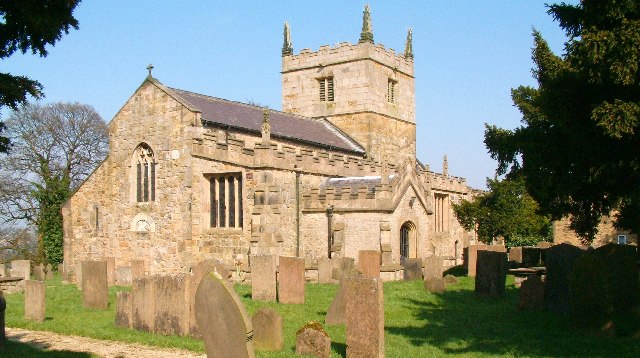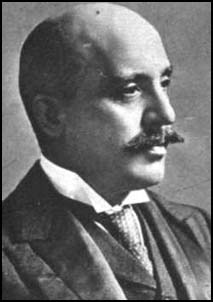|
Hardstoft
Hardstoft is a hamlet in Derbyshire, England. It is located four miles east of Clay Cross, on the B6039 road. The Mexican Eagle Petroleum Company found small quantities of oil near Hardstoft in 1919 under encouragement from the British government. R. W. Ferrier, accessed 28 December 2008 See also *Listed buildings in Ault Hucknall
Ault Hucknall is a civil parish in the Bolsover district of Derbyshire, England. The paris ...
[...More Info...] [...Related Items...] OR: [Wikipedia] [Google] [Baidu] |
Listed Buildings In Ault Hucknall
Ault Hucknall is a civil parish in the Bolsover district of Derbyshire, England. The parish contains 23 listed buildings that are recorded in the National Heritage List for England. Of these, three are listed at Grade I, the highest of the three grades, one is at Grade II*, the middle grade, and the others are at Grade II, the lowest grade. The parish contains the village of Ault Hucknall and the surrounding area, including the settlements of Astwith, Hardstoft, and Rowthorne. The most important buildings in the parish are Hardwick Hall Hardwick Hall in Derbyshire is an architecturally significant country house from the Elizabethan era, a leading example of the Elizabethan prodigy house. Built between 1590 and 1597 for Bess of Hardwick, it was designed by the architect R ... and its predecessor Hardwick Old Hall, which are listed together with associated structures in the grounds and surrounding parkland. The other listed buildings include a church ... [...More Info...] [...Related Items...] OR: [Wikipedia] [Google] [Baidu] |
Ault Hucknall
Ault Hucknall (Old English: ''Hucca's nook of land'') is a village and civil parish in the Bolsover (borough), Bolsover district of Derbyshire, England. The population of the civil parish at the 2011 census was 1,053. Local residents describe the settlement as the 'smallest village in England', as it consists of only a church and three houses. The philosopher Thomas Hobbes was interred within Ault Hucknall's St John the Baptist's Church, Ault Hucknall, St John the Baptist Church following his death in 1679. Hardwick Hall is within the parish boundary, which also contains the settlements of Astwith, Bramley Vale, Doe Lea, Hardstoft, Rowthorne and Stainsby, Derbyshire, Stainsby. See also * Listed buildings in Ault Hucknall * List of places in Derbyshire * Murder of Barbara Mayo, infamous unsolved murder of a woman which occurred in the village in 1970 Notes References External links Ault Hucknall CP (Parish)Neighbourhood statistics website, Office for National Statistics.Chur ... [...More Info...] [...Related Items...] OR: [Wikipedia] [Google] [Baidu] |
Bolsover
Bolsover is a market town and the administrative centre of the Bolsover District, Derbyshire, England. It is from London, from Sheffield, from Nottingham and from Derby. It is the main town in the Bolsover district. The civil parish for the town is called Old Bolsover. It includes the town and the New Bolsover model village, along with Hillstown, Carr Vale, Shuttlewood, Stanfree, Oxcroft, and Whaley. Its population at the 2011 UK Census was 11,673. Bolsover, along with several nearby villages, is situated in the north-east of the county of Derbyshire. It is the main town in the District of Bolsover, which is an electoral constituency and part of Derbyshire. Bolsover sought city status in the Platinum Jubilee Civic Honours, but the bid was unsuccessful. History The origin of the name is uncertain. It may be derived from ''Bula's Ofer'' or ''Boll's Ofer'', respectively the Old English for ''Bull's Ridge'' and ''Boll's Ridge'' (the ridge associated with a person named ''Bo ... [...More Info...] [...Related Items...] OR: [Wikipedia] [Google] [Baidu] |
Derbyshire
Derbyshire ( ) is a ceremonial county in the East Midlands, England. It includes much of the Peak District National Park, the southern end of the Pennine range of hills and part of the National Forest. It borders Greater Manchester to the north-west, West Yorkshire to the north, South Yorkshire to the north-east, Nottinghamshire to the east, Leicestershire to the south-east, Staffordshire to the west and south-west and Cheshire to the west. Kinder Scout, at , is the highest point and Trent Meadows, where the River Trent leaves Derbyshire, the lowest at . The north–south River Derwent is the longest river at . In 2003, the Ordnance Survey named Church Flatts Farm at Coton in the Elms, near Swadlincote, as Britain's furthest point from the sea. Derby is a unitary authority area, but remains part of the ceremonial county. The county was a lot larger than its present coverage, it once extended to the boundaries of the City of Sheffield district in South Yorkshire ... [...More Info...] [...Related Items...] OR: [Wikipedia] [Google] [Baidu] |
Hamlet (place)
A hamlet is a human settlement that is smaller than a town or village. Its size relative to a parish can depend on the administration and region. A hamlet may be considered to be a smaller settlement or subdivision or satellite entity to a larger settlement. The word and concept of a hamlet has roots in the Anglo-Norman settlement of England, where the old French ' came to apply to small human settlements. Etymology The word comes from Anglo-Norman ', corresponding to Old French ', the diminutive of Old French ' meaning a little village. This, in turn, is a diminutive of Old French ', possibly borrowed from ( West Germanic) Franconian languages. Compare with modern French ', Dutch ', Frisian ', German ', Old English ' and Modern English ''home''. By country Afghanistan In Afghanistan, the counterpart of the hamlet is the qala ( Dari: قلعه, Pashto: کلي) meaning "fort" or "hamlet". The Afghan ''qala'' is a fortified group of houses, generally with its ... [...More Info...] [...Related Items...] OR: [Wikipedia] [Google] [Baidu] |
Clay Cross
Clay Cross is a town and a civil parish in the North East Derbyshire district of Derbyshire, England. It is a former industrial and mining town, about south of Chesterfield. It is directly on the A61. Surrounding settlements include North Wingfield, Tupton, Pilsley and Ashover. History The High Street was built over a pre-dating Roman road, that may have been called Rykneild Street, where a tollhouse (1786-1876) was situated. The discovery of coal in the area, introduced the village to the Industrial Revolution. Packhorses at first transported the 'blackgold' over the Peaks on a turnpike road opened in 1756 between the iron foundries of Derby and Sheffield. Until the early 19th century, Clay Cross was a small village known as Clay Lane, but increasing demand for coal and other minerals trebled the population by 1840 , the oldest building being the George and Dragon Inn. While driving the tunnel for the North Midland Railway, George Stephenson discovered both coal and iron, ... [...More Info...] [...Related Items...] OR: [Wikipedia] [Google] [Baidu] |
B6039 Road
New B roads are numbered routes in Great Britain of lesser importance than A roads. See the article Great Britain road numbering scheme The Great Britain road numbering scheme is a numbering scheme used to classify and identify all roads in Great Britain. Each road is given a single letter (which represents the road's category) and a subsequent number (between 1 and 4 digits). ... for the rationale behind the numbers allocated. Zone 6 (3 digits) Zone 6 (4 digits) References {{DEFAULTSORT:B Roads in Zone 6 of the Great Britain Numbering Scheme 6 6 ... [...More Info...] [...Related Items...] OR: [Wikipedia] [Google] [Baidu] |
Mexican Eagle Petroleum Company
Compañía Mexicana de Petróleo El Águila SA, (''El Águila'' for short, called in English the Mexican Eagle Oil Company or Mexican Eagle Petroleum Corporation, was a Mexican oil company in the 20th century. The company, established in 1909, produced and commercialised gasoline and lubricants until it was absorbed by the Royal Dutch Shell in 1959. History Sir Weetman Pearson, Bart. (Viscount Cowdray from 1910) founded the company in 1909 to develop his investments in the Mexican oil fields. Pearson's interests in Mexico had begun in 1889 when he won a contract from the government of Porfirio Díaz for his civil engineering company, S. Pearson and Sons Ltd, to build the Gran Canal in Mexico City. This was followed by contracts in 1895 to build a harbour at Veracruz and in 1896 to build the Tehuantepec Railway. Pearson diversified into mining, landholding, transport and electrical utilities around Veracruz. He and the engineer F.S. Pearson (no relation) founded the Mexico ... [...More Info...] [...Related Items...] OR: [Wikipedia] [Google] [Baidu] |
Hamlets In Derbyshire
A hamlet is a human settlement that is smaller than a town or village. Its size relative to a parish can depend on the administration and region. A hamlet may be considered to be a smaller settlement or subdivision or satellite entity to a larger settlement. The word and concept of a hamlet has roots in the Anglo-Norman settlement of England, where the old French ' came to apply to small human settlements. Etymology The word comes from Anglo-Norman ', corresponding to Old French ', the diminutive of Old French ' meaning a little village. This, in turn, is a diminutive of Old French ', possibly borrowed from (West Germanic) Franconian languages. Compare with modern French ', Dutch ', Frisian ', German ', Old English ' and Modern English ''home''. By country Afghanistan In Afghanistan, the counterpart of the hamlet is the Qila, qala (Dari language, Dari: قلعه, Pashto: کلي) meaning "fort" or "hamlet". The Afghan ''qala'' is a fortified group of houses, gener ... [...More Info...] [...Related Items...] OR: [Wikipedia] [Google] [Baidu] |




